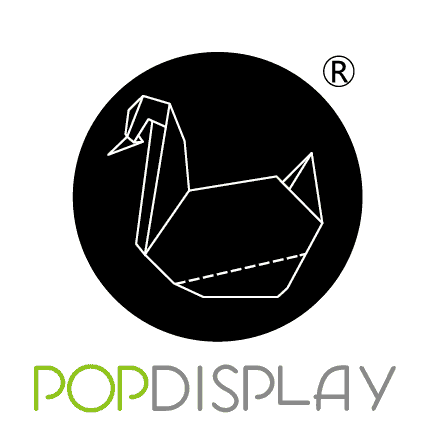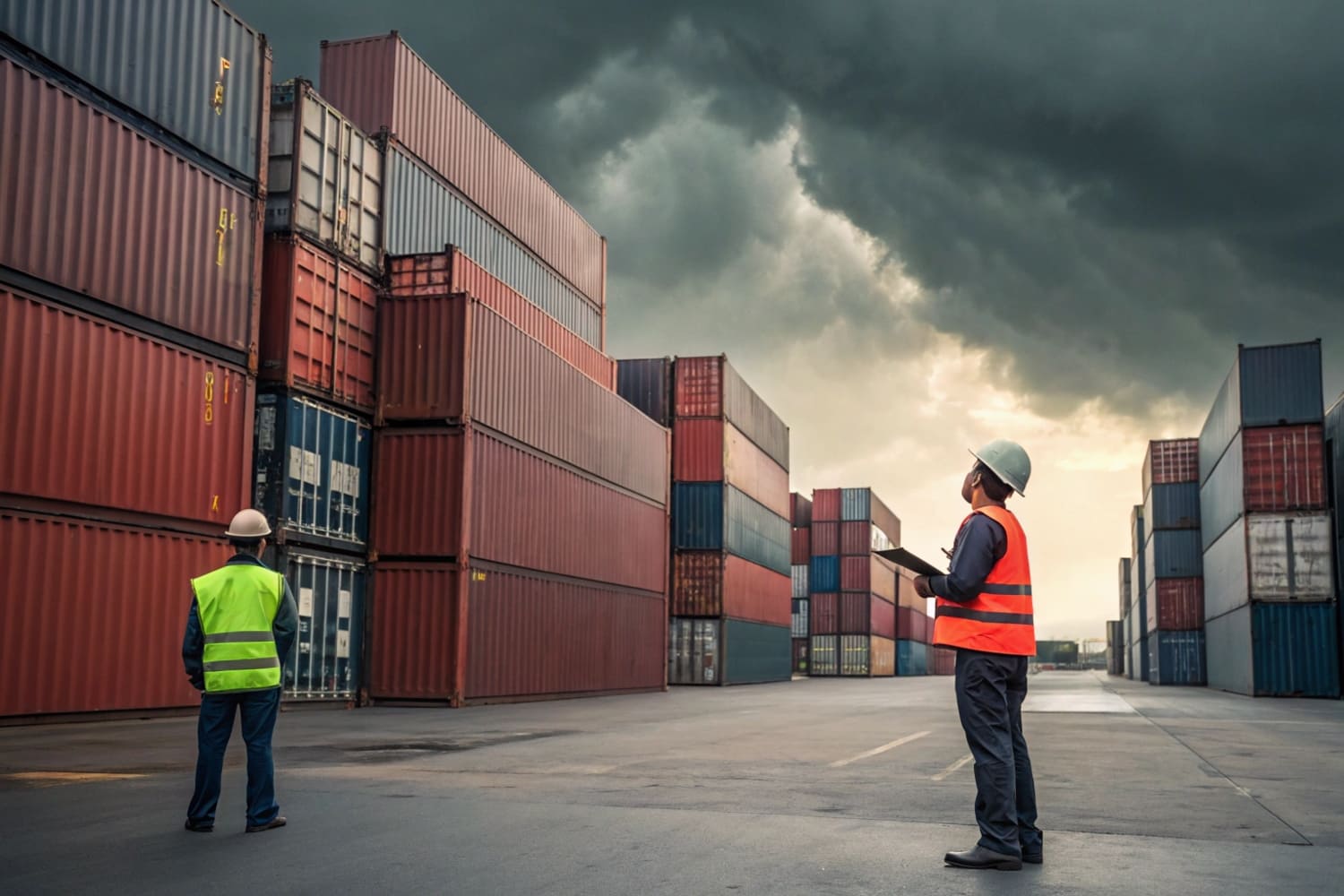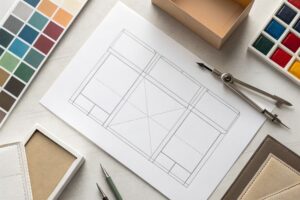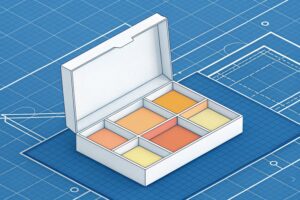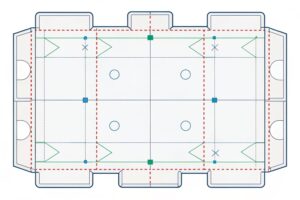I run a cardboard displays factory. I see costs rise, orders shift, and plans change. Tariffs add heat to this mix.
Tariffs raise input costs, push buyers to re-source, and force faster design-to-ship cycles. They hit pulp, liners, inks, hardware, and freight. Smart firms offset with lightweighting, flat-pack designs, digital print, and nearshoring assembly. Margins shrink without pricing power. Agility decides who wins.
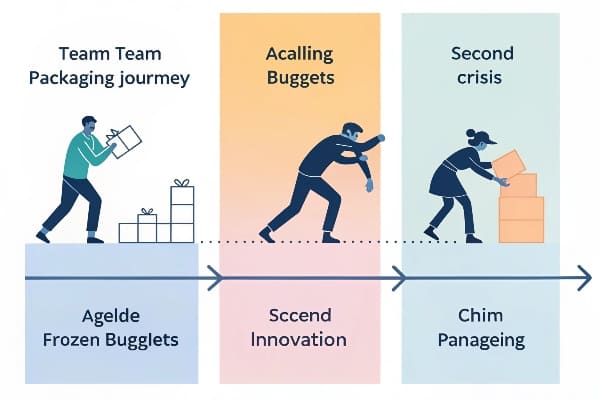
I will explain what tariffs do to manufacturing first, then to packaging, then to display design choices, and then to shipping. I will share what I changed on my lines.
How will tariffs affect the manufacturing industry?
Supply chains face new costs and longer lead times. Buyers ask for backup plans. Teams must change specs fast.
Tariffs lift material and component costs, cut price competitiveness, and shift orders to countries with lower duties. Firms respond with design standardization, dual sourcing, automation, and local value-add to reduce dutiable content. Execution speed matters more than size.

What moves first, what moves later
When tariffs change, I see a simple order. Raw materials move first in price. Converters try to pass costs next. Brands push back last. I learned this during a rush for a sporting-goods client. We had a floor display that used heavy E/F-flute combo. Pulp prices rose and duty bands shifted. I cut the board grade by one step, added smart ribs, and kept the same load test. The client kept the launch date.
Cost levers I use
— Engineering: lighter board, more structure.
— Print: digital for short runs, flexo for volume.
— Sourcing: mix China and ASEAN; keep a quick-turn local die-cut for emergencies.
— Labor: jigs and simple fixtures to reduce assembly time.
| Pressure | Risk if ignored | Fast lever | Time to effect |
|---|---|---|---|
| Higher duties1 | Margin loss | Re-engineer bill of materials | 2–10 days |
| Volatile pulp | Quote gaps | Dynamic pricing bands2 | 1–3 days |
| Longer transit | Stockouts | Flat-pack + local kitting | 7–14 days |
| Buyer re-sourcing | Lost accounts | Dual-site production plan | 2–6 weeks |
How will tariffs affect the packaging industry?
Packaging sits between product and retail. Tariffs hit board, inks, coatings, and hardware. Retailers still want speed.
Tariffs raise packaging input costs and complicate sourcing, but smart design offsets them. Brands win by using recycled fiber, flat-pack modules, digital print for small promos, and standardized footprints that ship dense and assemble fast. Cost per display stays stable when design works.

Where the money leaks and how I plug it
I watch four buckets: fiber, print, protection, and logistics. Fiber costs move with duties and pulp. I switch to higher recycled content and optimize flute. Print costs rise with imported inks or plates. I shift seasonal runs to digital to cut waste. Protection costs jump when foam or plastic parts face tariffs, so I change to paper-based edge guards. Logistics costs rise with longer routes, so I design flat-pack sets that cube out containers.
Why this helps buyers
Buyers want fewer surprises. I publish a tariff-ready price sheet3 with three bands. I lock an engineering change window. I include pass/fail load and vibration test data. This simple package keeps trust in a messy market.
| Packaging Area | Tariff-Sensitive Inputs | Design Response | Result |
|---|---|---|---|
| Fiber/liner | Virgin pulp, kraft | Recycled mix + ribbing | Same strength, lower cost |
| Imported inks, plates | Digital short-run, spot flexo | Less waste, fast changes | |
| Protection | Plastic corners, foam | Paper edge guards | Fully recyclable |
| Logistics | Ocean, fuel | Flat-pack modularity | More units per container |
How do tariffs affect packaging?
Tariffs change the bill of materials line by line. Small choices add up. Speed of change decides the outcome.
Tariffs push teams to redesign structures, swap coatings, and change print methods. The best fix is to use recycled fiber, weight-bearing folds, water-based inks, paper-based protection, and modular panels. This holds strength, reduces duty exposure, and protects lead time.

A real project from my floor
I built POP displays for a hunting brand launch. The first spec used laminated litho labels and plastic hooks. Duties and transit time broke the budget. I changed to direct-to-corrugate digital print4, die-cut paper hooks with reinforcement, and a knockdown body with quick locks. The display passed 25 kg load over 72 hours and a drop test. The client hit a trade show date. Orders repeated with only art swaps.
Simple framework I follow
1. Reduce dutiable content: swap imported components for local or paper-based options.
2. Increase recycled fiber5: lift PCR share while holding stiffness with structure.
3. Design for cube: break large panels into interlocking parts that ship flat.
4. Digitize art: move promos to digital print to avoid plate costs and delays.
*5. Test early: run compression, edge crush, and transit tests before pricing.
| Choice | Old Spec | New Spec | Effect |
|---|---|---|---|
| Litho label | Direct digital | Faster art changes | |
| Hooks | Plastic | Reinforced paper | Lower duty, recyclable |
| Panels | One-piece | Modular | Better cube fill |
| Coating | Solvent gloss | Water-based | Easier compliance |
How do tariffs affect the shipping industry?
Shipping turns design into reality. Tariffs shift lanes. Carriers change surcharges. Warehouses get tight.
Tariffs change routing and timing, which raises landed cost and risk. The fix is to compress volume per shipment with flat-pack displays, use mixed-container strategies, add nearshore kitting, and hold small safety stock near launch windows. This keeps retail dates safe.
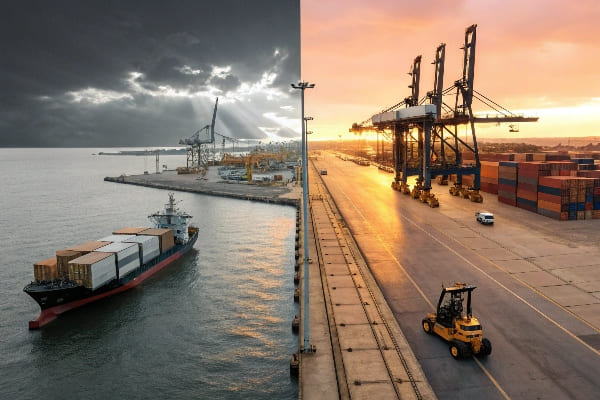
My playbook when lanes shift
I plan for two lanes at all times. I keep one ocean route and one regional backup. I stage printed panels near the buyer, and ship only hardware if needed. I also keep neutral pallets that accept late-stage branding sleeves. This keeps stores stocked during tariff waves. In one case, a North America launch for a seasonal bow display faced a last-minute duty spike. I shipped blank bases first, air-freighted only branded headers, and saved the promotion.
What to track each week
— Container utilization: target 85–95% cube filled with flat-pack sets
— Mix of lanes: ocean baseline, small air top-up for launch dates
— Regional stock: headers and trays stored close to DCs
— Damage rates: check edge, corner, and color rub after long hauls
| Shipping Topic | Risk | Tactic | Outcome |
|---|---|---|---|
| Lane changes | Delay | Dual-lane plan | On-time launch |
| Surcharges | Cost rise | Mixed-container loads | Stable landed cost |
| Warehousing | Space crunch | Modular kits | Faster turns |
| Damage | Returns | Better inner packs | Fewer claims |
Conclusion
Tariffs raise costs and risk. Smart design, fast tests, dual sourcing, and flat-pack shipping protect margin and launch dates.
Understanding the impact of higher duties can help businesses strategize pricing and maintain margins. ↩
Exploring dynamic pricing bands can provide insights into managing costs effectively in fluctuating markets. ↩
Understanding a tariff-ready price sheet can help you manage costs and avoid surprises in pricing. ↩
Explore the advantages of direct-to-corrugate digital print for cost-effective and efficient packaging solutions. ↩
Learn how incorporating recycled fiber can enhance sustainability in packaging and reduce environmental impact. ↩
